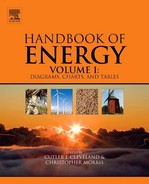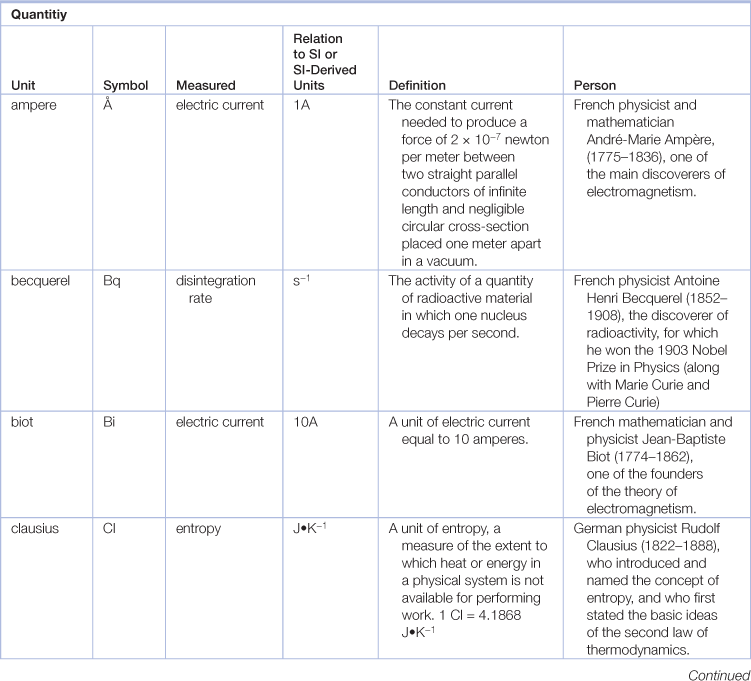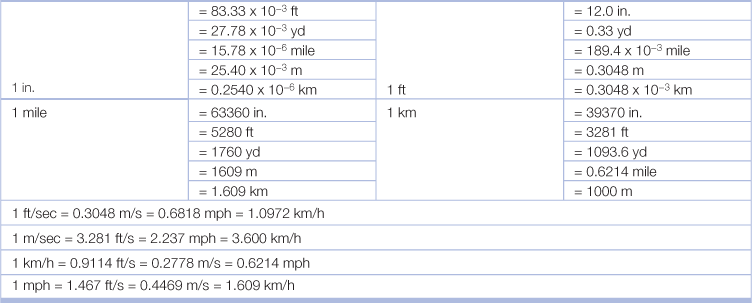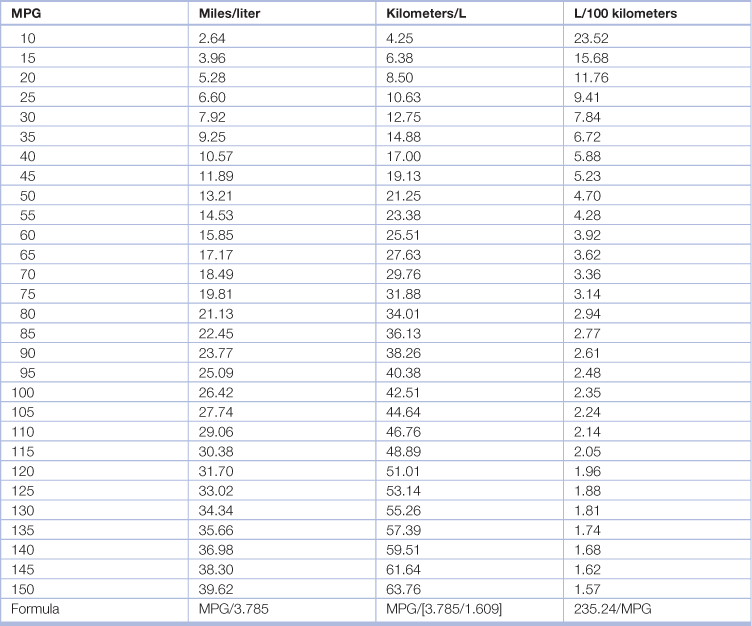Measurement
Tables

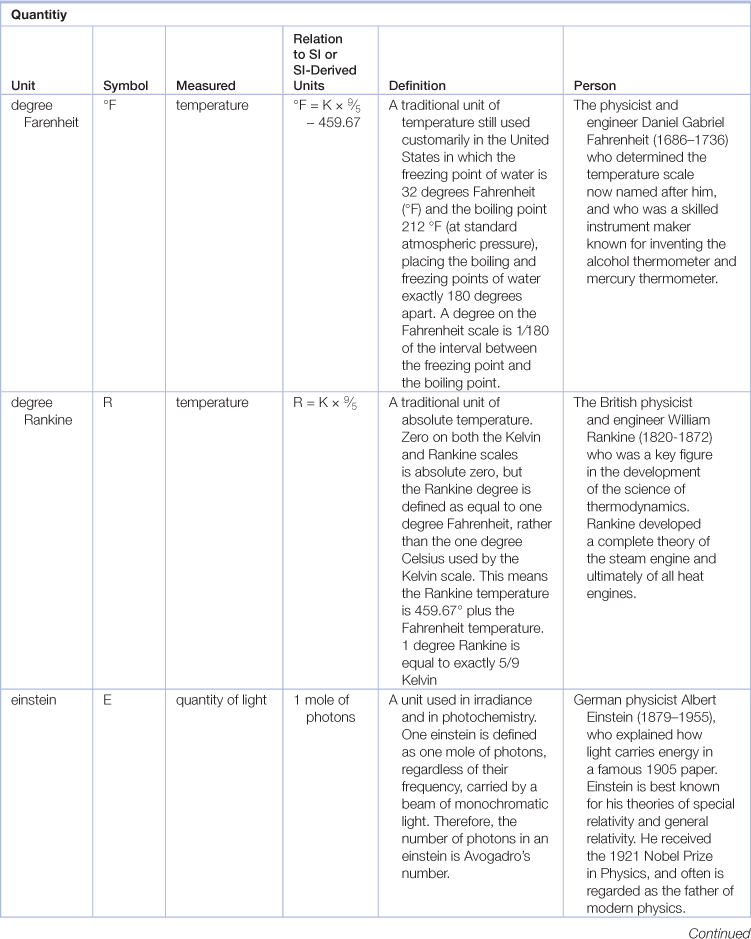
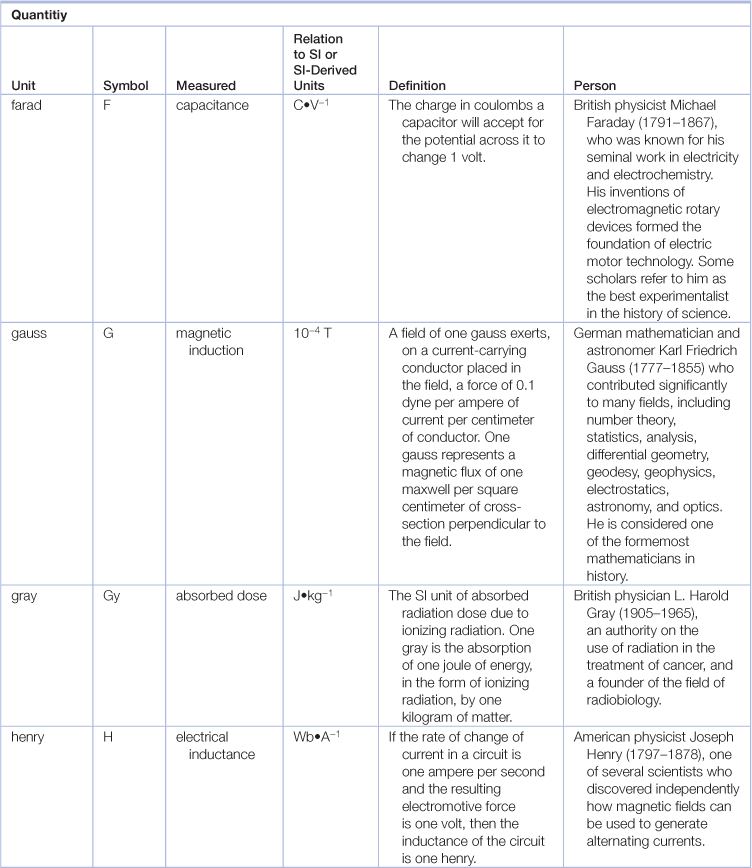
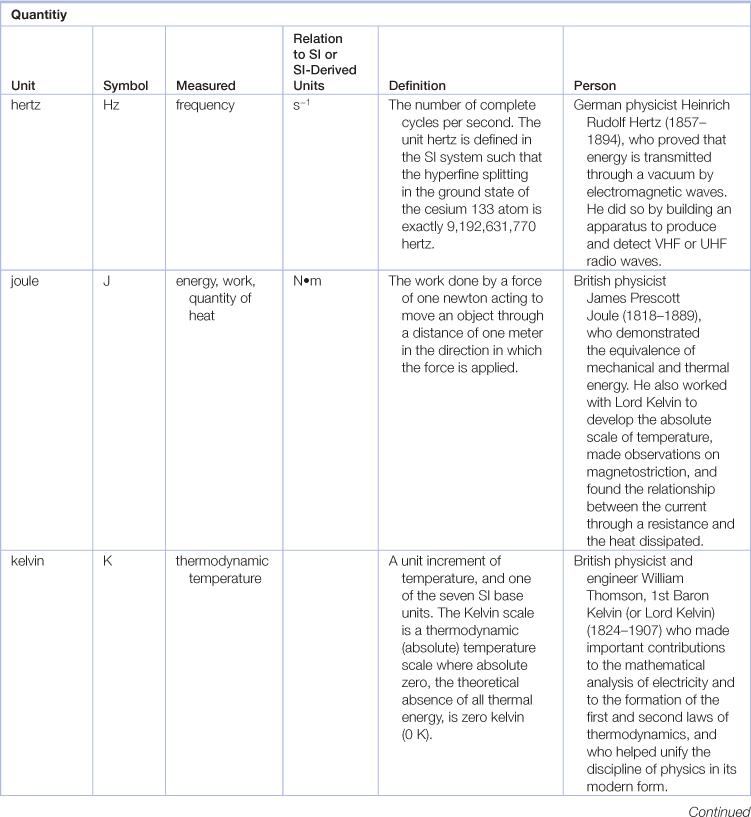
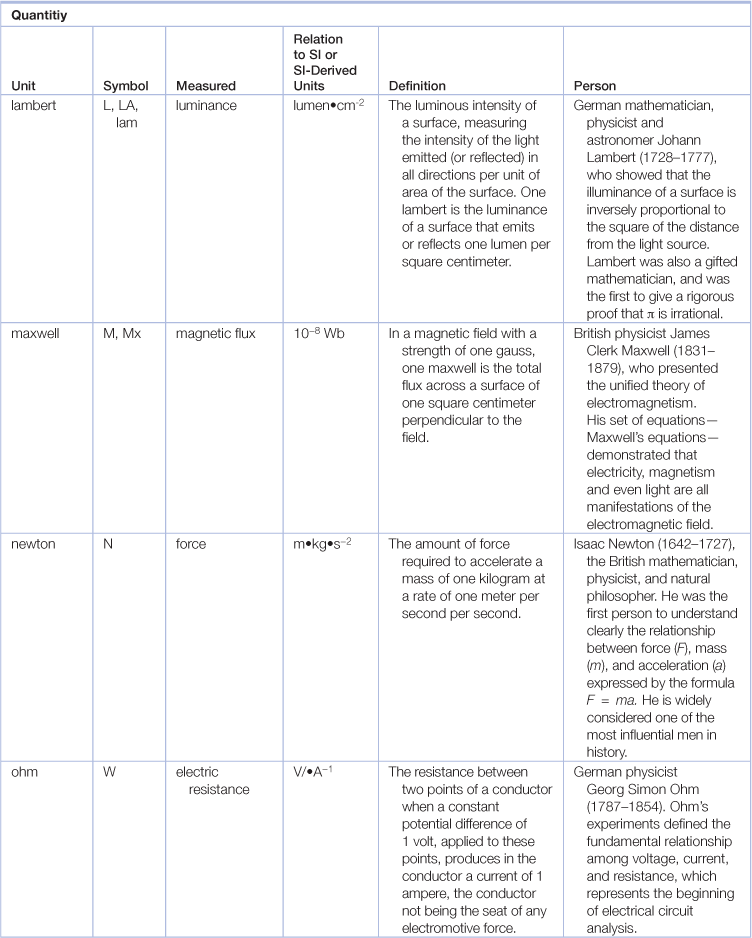
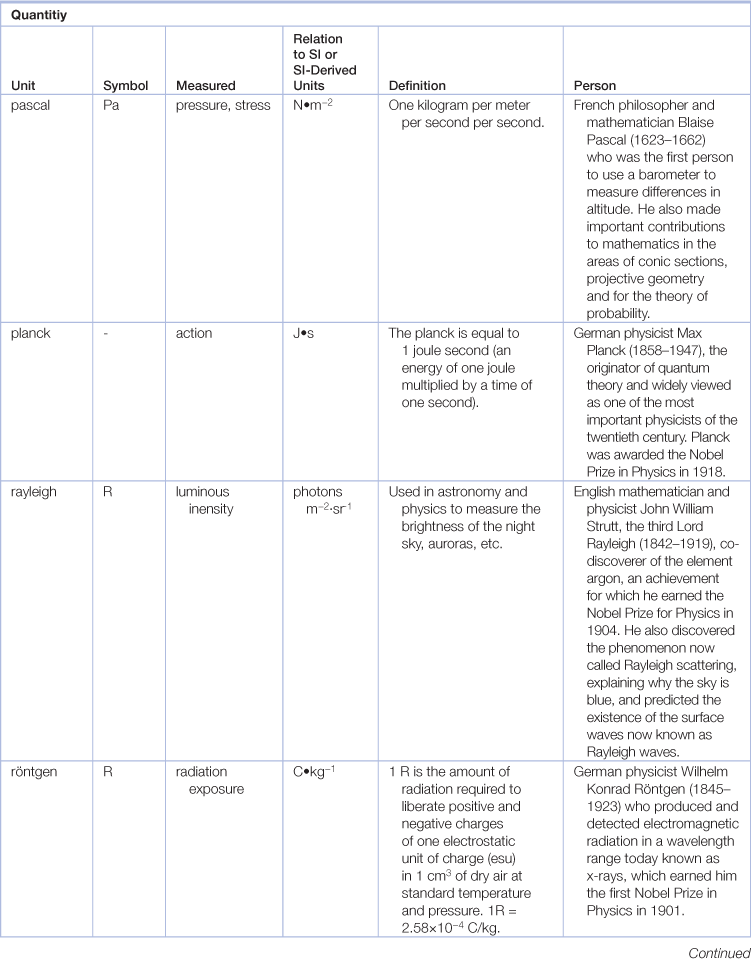

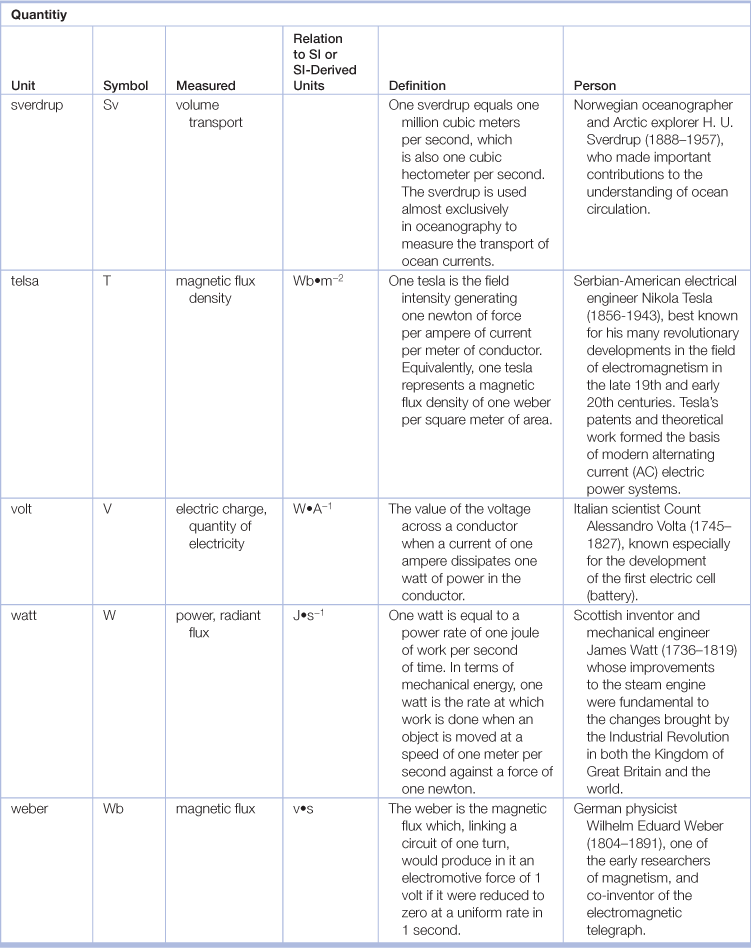
Table 19.2
Examples of parameters measurable by sensors
| Measurement Type | Measurable Quantities |
| Thermal | Temperature, heat, heat flow, entropy, heat capacity, etc. |
| Radiation | Gamma rays, X-rays, ultraviolet, visible and IR light, microwaves, radio waves, etc. |
| Mechanical | Displacement, velocity, acceleration, force, pressure, mass flow, acoustic wavelength and amplitude, etc. |
| Magnetic | Magnetic field, flux, magnetic moment, magnetization, magnetic permeability, etc. |
| Chemical | Humidity, pH, concentrations, toxic and flammable materials, pollutants, etc. |
| Biological | Sugars, proteins, hormones, antigens, etc. |
Pistoia, Gianfranco. 2009. Battery Operated Devices and Systems, (Amsterdam, Elsevier).
Table 19.3
International energy conversions

Source: Davis, Stacy C., Susan W. Diegel, and Robert G. Boundy. 2009. Transportation Energy Data Book: Edition 28, Oak Ridge National Laboratory, Table B.7.
Table 19.5
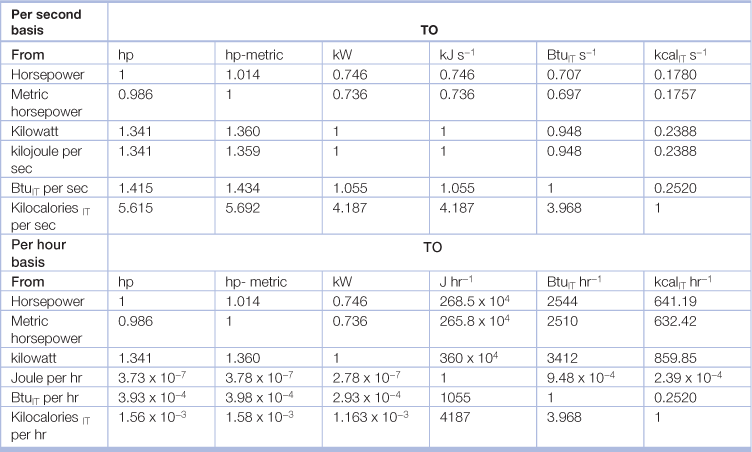
The subscript “IT” stands for International Table values, which are only slightly different from thermal values normally subscripted “th”. The “IT” values are most commonly used in current tables and generally are not subscripted, but conversion calculators ususally include both.
Table 19.7
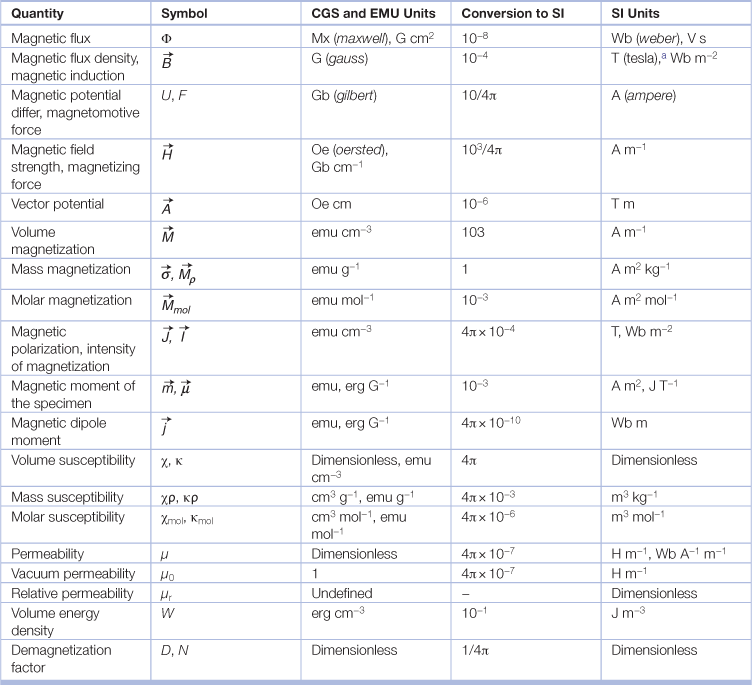
Source: Boca, Roman. 2012. A Handbook of Magnetochemical Formulae, (Oxford, Elsevier).
Table 19.8
Some common SI units of electromagnetism

Source: International Union of Pure and Applied Chemistry. 1993. Quantities, Units and Symbols in Physical Chemistry, 2nd edition, (Oxfor, Blackwell Science).
Table 19.9
Radiometric terminology and units
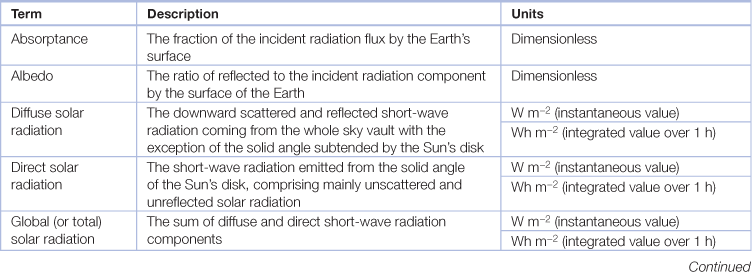
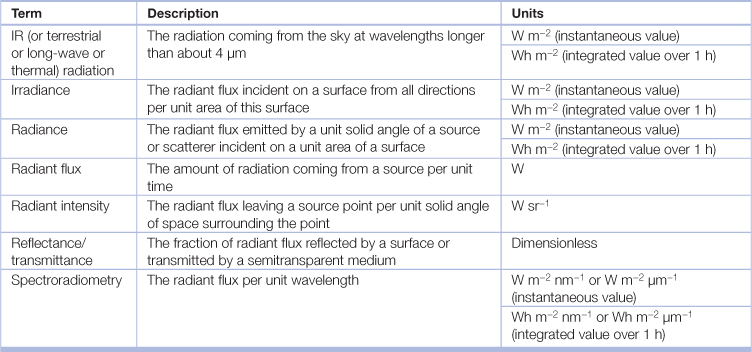
Source: Kambezidis, H.D. 2012. 3.02 - The Solar Resource, In: Ali Sayigh, Editor-in-Chief, Comprehensive Renewable Energy, (Oxford, Elsevier), 2012, Pages 27-84.
Table 19.10
Unit-of-measure equivalents for electricity
| Unit | Equivalent |
| Kilowatt (kW) | 1,000 (One Thousand) Watts |
| Megawatt (MW) | 1,000,000 (One Million) Watts |
| Gigawatt (GW) | 1,000,000,000 (One Billion) Watts |
| Terawatt (TW) | 1,000,000,000,000 (One Trillion) Watts |
| Gigawatt | 1,000,000 (One Million) Kilowatts |
| Thousand Gigawatts | 1,000,000,000 (One Billion) Kilowatts |
| Kilowatthours (kWh) | 1,000 (One Thousand) Watthours |
| Megawatthours (MWh) | 1,000,000 (One Million) Watthours |
| Gigawatthours (GWh) | 1,000,000,000 (One Billion) Watthours |
| Terawatthours (TWh) | 1,000,000,000,000 (One Trillion) Watthours |
| Gigawatthours | 1,000,000 (One Million) Kilowatthours |
| Thousand Gigawatthours | 1,000,000,000 (One Billion) Kilowatthours |
Table 19.11
Heat contents and carbon content coefficients of various fossil fuels
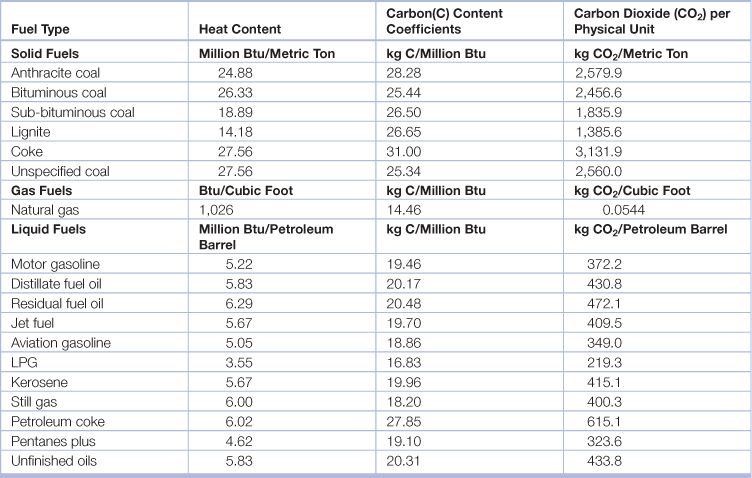
Note: For fuels with variable heat contents and carbon content coefficients, 2009 U.S. average values are presented. All factors are presented in gross calorific values (GCV) (i.e., higher heating values). Miscellaneous products includes all finished products not otherwise classified, (e.g., aromatic extracts and tars, absorption oils, ram-jet fuel, synthetic natural gas, naptha-type jet fuel, and specialty oils).
Source: United States Environmental Protection Agency.
Table 19.12
Common quantities in CO2 research
| Quantity | Value |
| Solar constant | 1.375 kW/m2 |
| Earth mass | 5.976 × 1024 |
| Equatorial radius | 6.378 × 106 m |
| Polar radius | 6.357 × 106 m |
| Mean radius | 6.371 × 106 m |
| Surface area | 5.101 × 1014 m2 |
| Land area | 1.481 × 1014 m2 |
| Ocean area | 5.620× 1014 m2 |
| Mean land elevation | 840 m |
| Mean ocean depth | 3730 m |
| Mean ocean volume | 1.550 × 1018 m3 |
| Ocean mass | 1.384 × 1021 kg |
| Mass of atmosphere | 5.137 × 1018 kg |
| Equatorial surface gravity | 8.780 m/s2 |
Source: Adapted from Kreith, Frank, Ed. 2000. CRC Handbook of Thermal Engineering (Boca Raton, CRC Press).
Table 19.14
The solar constant in alternative units
| Solar constant | Units |
| 1366.1 | W•m−2 [SI unit] |
| 0.13661 | W•cm−2 |
| 136.61 | mW•cm−2 |
| 1.3661 | x 106 erg∗cm−2s−1 |
| 126.9 | W•ft−2 |
| 1.959 | cal•cm−2•min−1 (± 0.03 cal•cm−2•min−1) |
| 0.0326 | cal•cm−2s−1 |
| 433.4 | Btu•ft−2•h−1 |
| 0.1202 | Btu•ft-2•s−1 |
| 1.956 | Langleys•min−1 |
Notes:
The calorie is the thermochemical calorie-gram and is defined as 4.1840 absolute joules.
The Btu is the thermochemical British thermal unit and is defined by the relationship:
1 Btu (thermochemical)/(°F∗lb) = 1 cal•g (thermochemical)/(°C•g).
The Langley, however, is defined in terms of the older thermal unit the calorie•g (mean); that is, 1 Langley = 1 cal•g (mean)•cm-2; 1 cal•g (mean) = 4.19002 J.
Source: Solar Spectra: Standard Air Mass Zero, <http://rredc.nrel.gov/solar/spectra/am0/ASTM2000.html>.
Table 19.15
List of uncertainty sources and total uncertainty associated with estimating solar radiation

Source: Adapted from National Renewable Energy Laboratory, Solar Radiation Data Manual for Flat-Plate and Concentrating Collectors, <http://rredc.nrel.gov/solar/pubs/redbook/>, accessed 13 May 2012.
